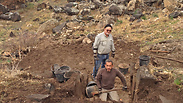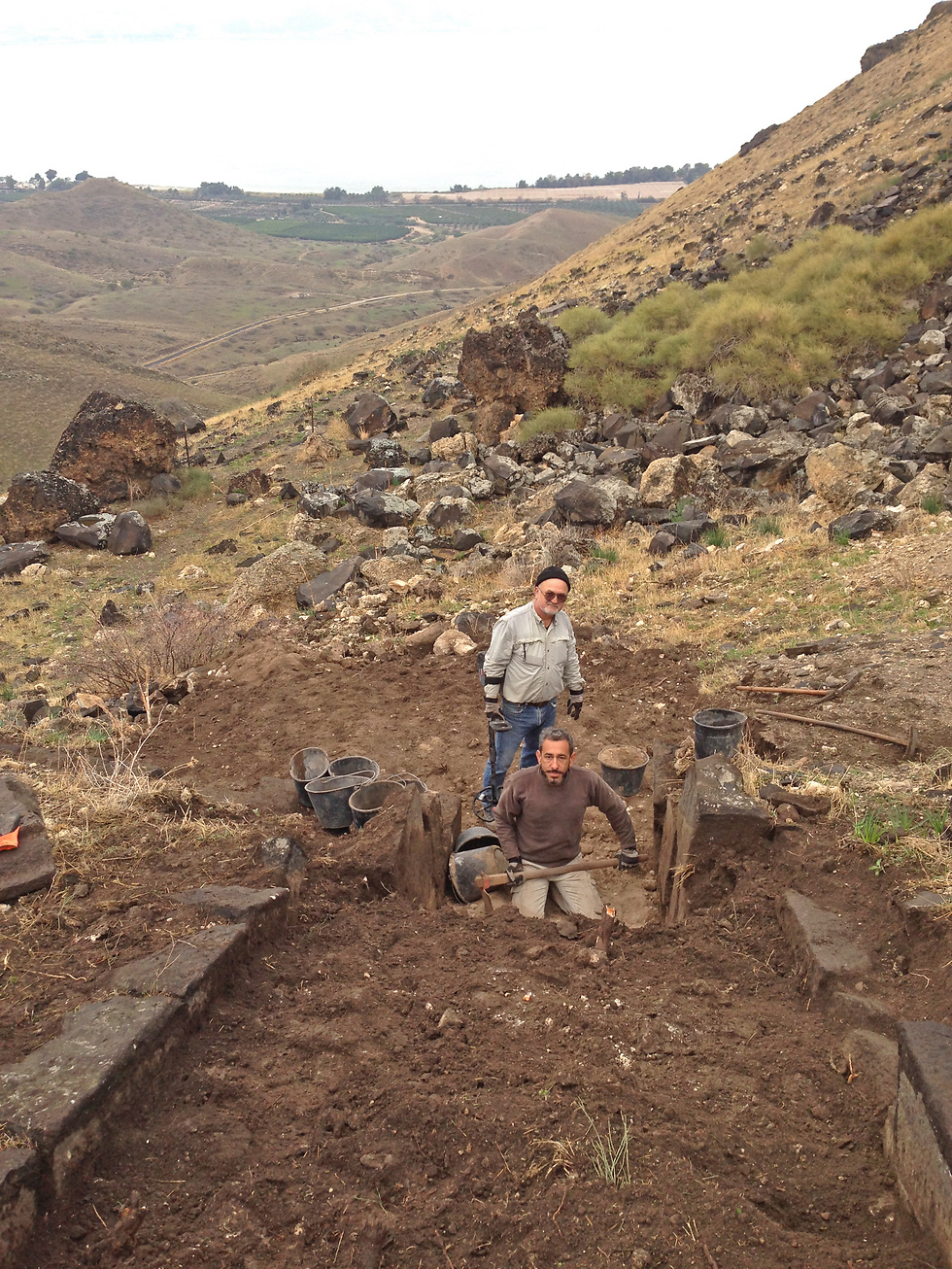
Drs. Iermolin and Eisenberg
Photo: A. Nakaryakov
Haifa University archaeologists find ancient Roman theater
The second-century amphitheater was apparently used for religious ceremonies in the ancient city of Hippos; while expected, the discovery was highly anticipated.
Haifa University archaeologists at Sussita, overlooking the Sea of Galilee, said Tuesday that they have unearthed a large Roman amphitheater dating to the second century. It was apparently used for religious ceremonies in the ancient city of Hippos.
Researchers consider the theater, a structure which generally served as the venue for the most popular public shows with seating to accommodate thousands of people, an expected yet highly anticipated discovery.
"It is simply unthinkable that any Roman polis could have existed without a theater," said Dr. Michael Eisenberg, head of the Hippos Excavations Project.

The results of the trial excavation at the theater: semicircular passage between the lower and upper seating arrangements (praencinctio) and entrance to a vaulted corridor (vomitorium) (Photo: M. Eisenberg) (Photo: M. Eisenberg)
Two findings led researchers to conclude they had discovered a theater: A passageway built of basalt ashlars, limited by a semicircular wall that served as a divide between the lower and upper blocks of seats. In addition, one of the vaulted corridors that crossed the seating area allowed the audience to reach their blocks of seats (the vomitorium).
A small excavation revealed the foundations of several rows of seats, though the seats themselves have long since vanished.
"The excavations outside the city over the past few years are falling into place like in a detective story," said Eisenberg.

Dr. A. Iermolin (standing) and Dr. M. Eisenberg during the excavation of the first vaulted passage (vomitorium) (Photo: A. Nakaryakov) (Photo: A. Nakaryakov)
"First we found the mask of Pan, then the monumental gate leading to what we began to assume was a large public compound—a sanctuary. And now, this year, we find a public bathhouse and theater in the same location, both facilities that in the Roman period could be associated with the god of medicine Asclepius or with gods of nature such as Dionysus and Pan.
"All these findings suggest that this was a large sanctuary outside the city—something that completely changes what we thought we knew about Hippos and the surrounding area," he explained.
"If our hypothesis is correct, it is quite possible that thousands of visitors to the theater came not to see the latest show in town, but to take part in rituals honoring one of the gods of the Greco-Roman pantheon."
"They watched and listened to the priests here until they entered a state of ecstasy and catharsis," he concluded.
Article reprinted with permission from TPS










